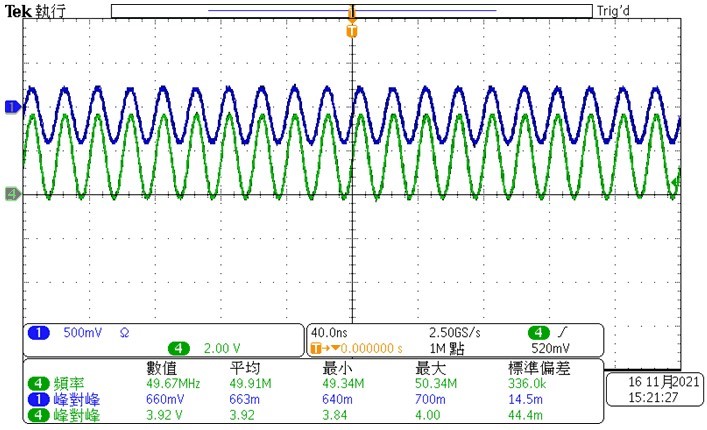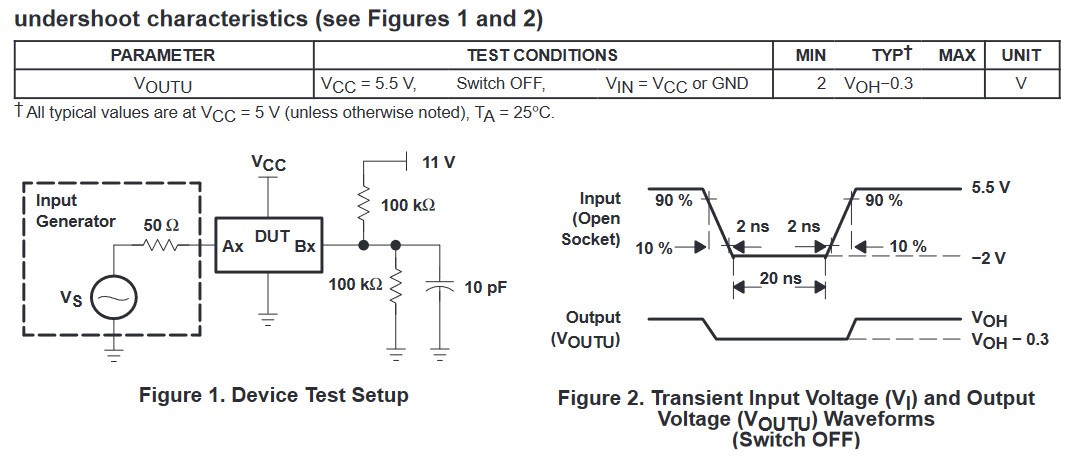Other Parts Discussed in Thread: TMUX1574
Hi Sir,
My customer used a signal generator to catch the output waveform on the SN74CBT3257C without damping resistors.
They found when the A port is connected to the B port, why another B port is not isolated and still catching the output waveform?
Could you explain this failure phenomenon?
Chanel 1 is B2 port
Chanel 4 is B1 port (S1 = L, A port = B1 port)




